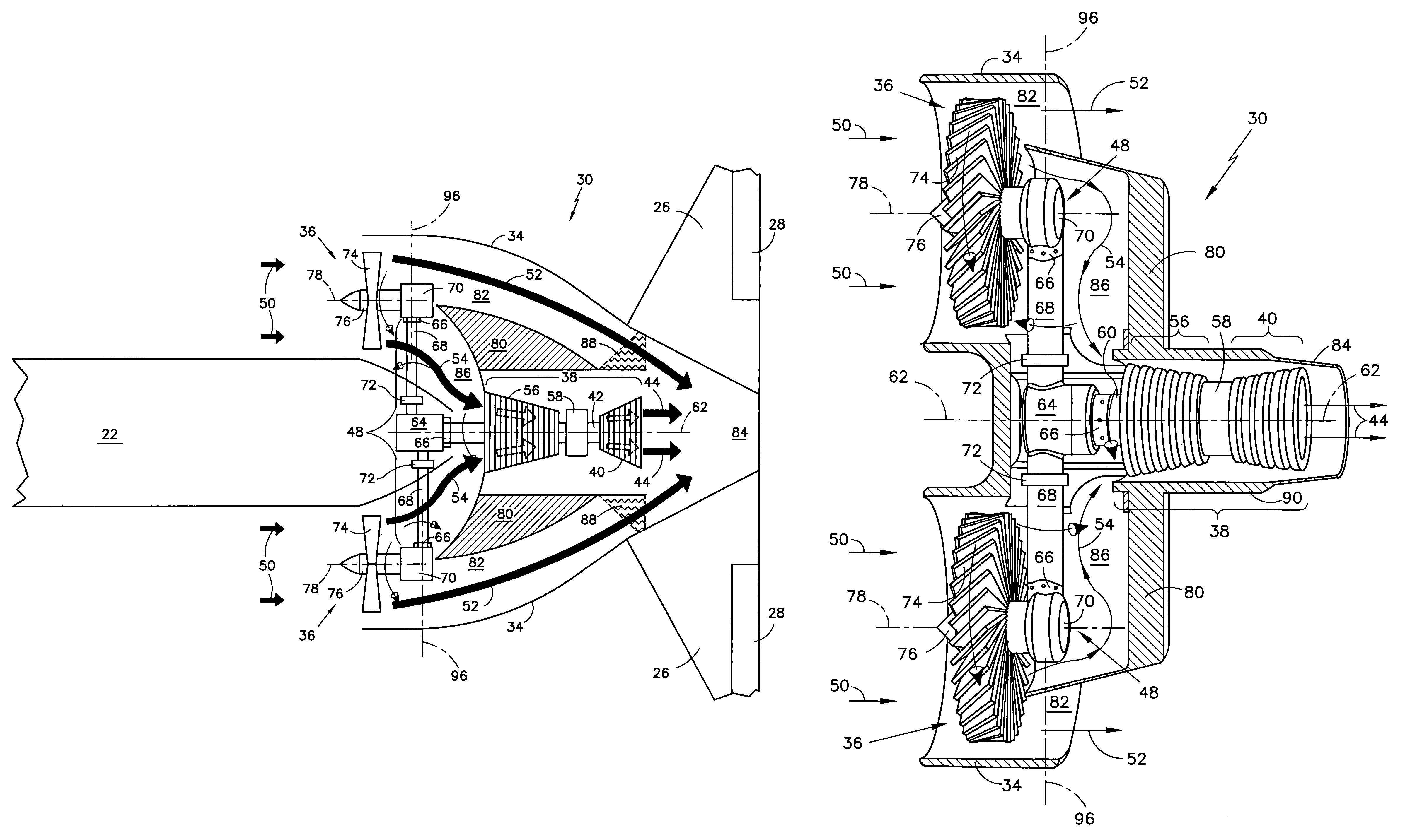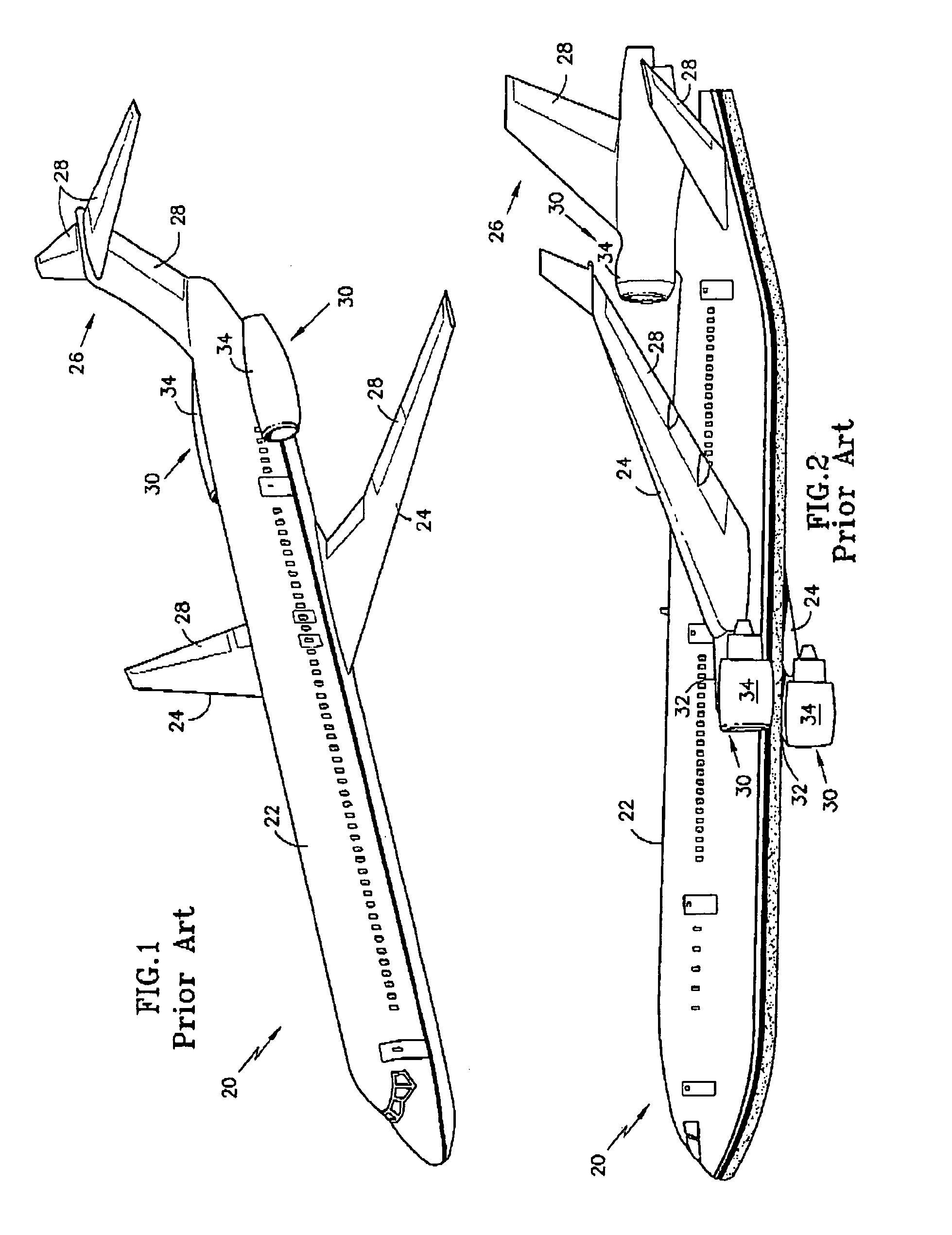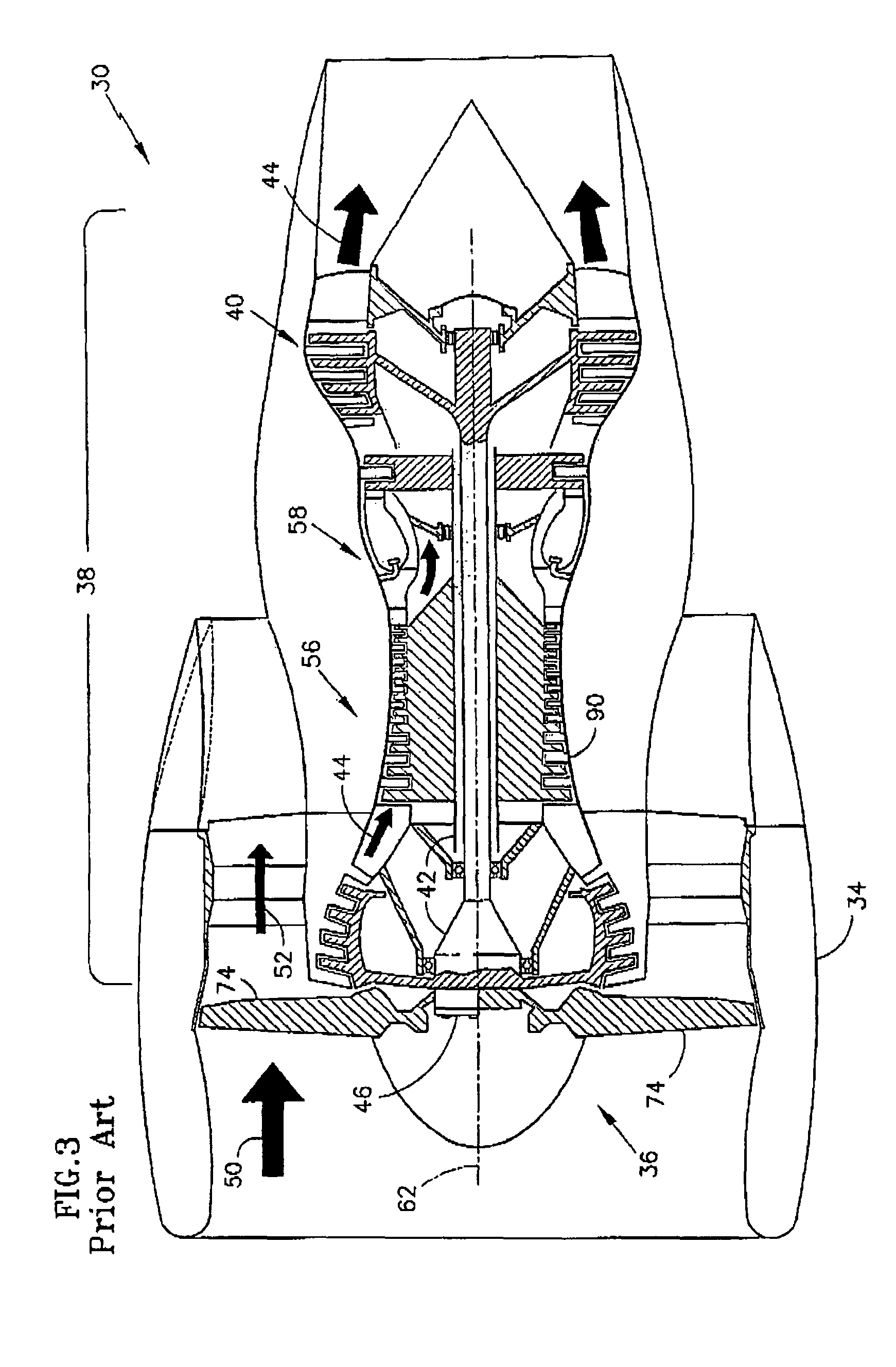Aircraft propulsion systems
a propulsion system and aircraft technology, applied in the field of aircraft industry, can solve the problems of reducing fuel burn, too fast rotation speed of a large bladed propulsion element b>36/b> for optimum aerodynamic efficiency, and limitation of wing b>24/b> to runway clearance, so as to reduce fuel burn and weight
- Summary
- Abstract
- Description
- Claims
- Application Information
AI Technical Summary
Benefits of technology
Problems solved by technology
Method used
Image
Examples
Embodiment Construction
[0025]A propulsion system 30 according to an embodiment of the present invention is illustrated in FIG. 4. Those skilled in the art will recognize an airframe 20 including a central, tubular fuselage 22 for carrying passengers and cargo, wings 24 extending outwardly from the fuselage 22 for providing lift, a rear mounted tail 26 and variable surfaces 28 for controlling the airframe 20 in flight. Mounted within the fuselage 22 and beneath the tail 26 is a propulsion system 30 including a single gas generator core 38 driving multiple bladed propulsion elements 36 via a power train 48. An ambient air stream 50 is directed rearward from the bladed propulsion elements 36 as a bypass stream 52 and a core stream 54. The bypass stream 52 is used for additional thrust, while the core stream 54 is directed into the core 38.
[0026]Directing your attention now to FIG. 5, further details of a present propulsion system 30 embodiment are illustrated. The gas generator core 38 includes a forward com...
PUM
 Login to View More
Login to View More Abstract
Description
Claims
Application Information
 Login to View More
Login to View More - R&D
- Intellectual Property
- Life Sciences
- Materials
- Tech Scout
- Unparalleled Data Quality
- Higher Quality Content
- 60% Fewer Hallucinations
Browse by: Latest US Patents, China's latest patents, Technical Efficacy Thesaurus, Application Domain, Technology Topic, Popular Technical Reports.
© 2025 PatSnap. All rights reserved.Legal|Privacy policy|Modern Slavery Act Transparency Statement|Sitemap|About US| Contact US: help@patsnap.com



